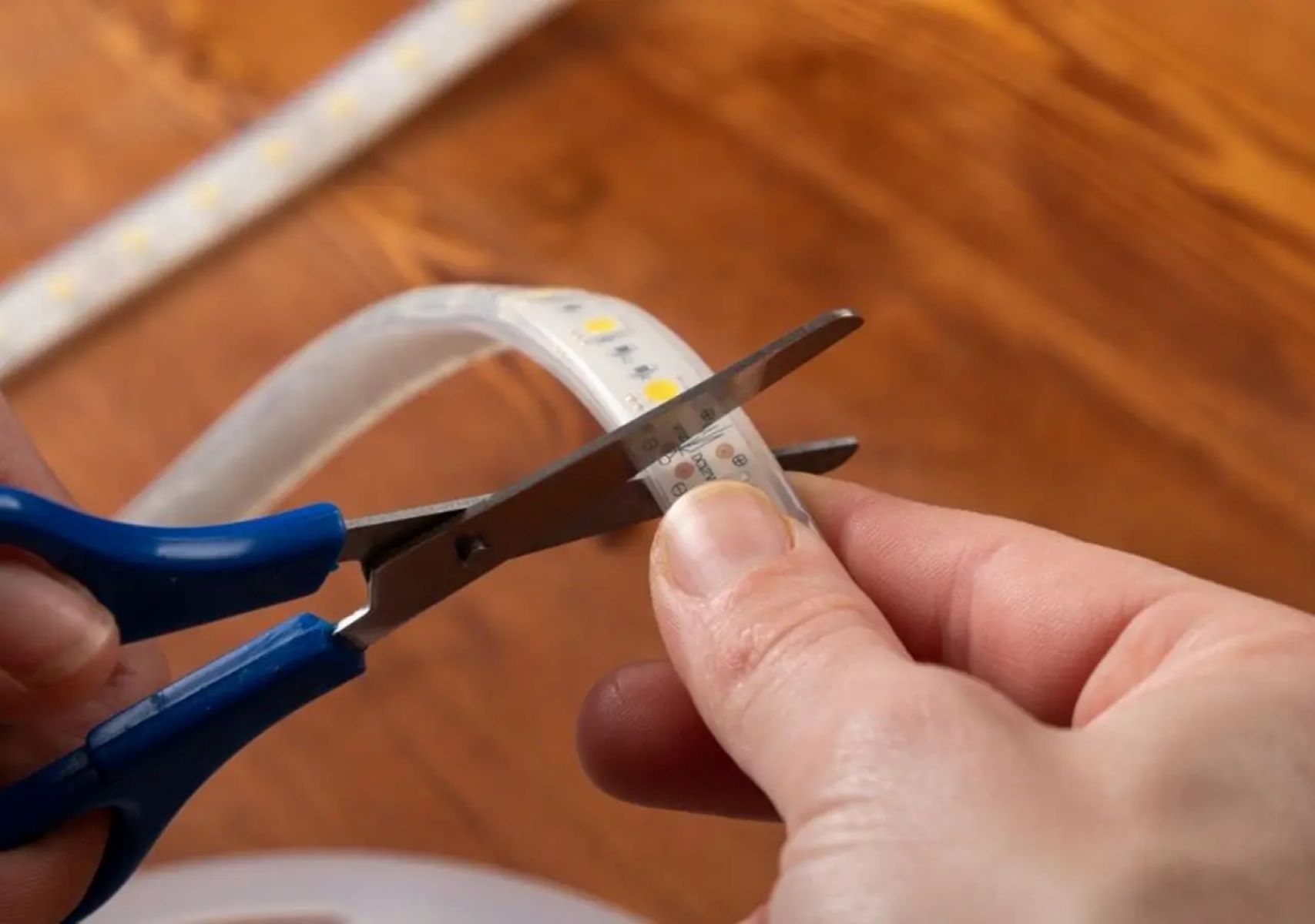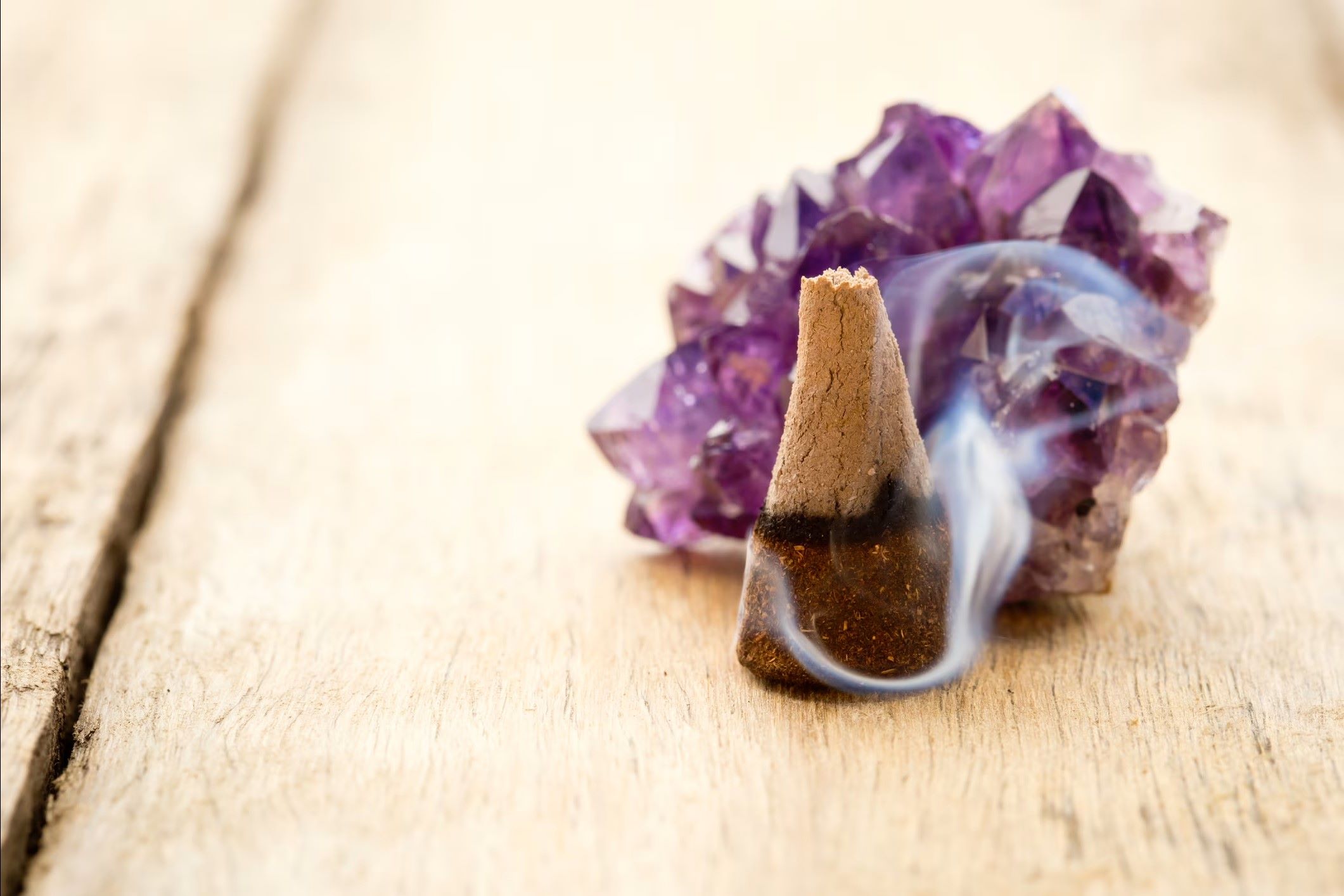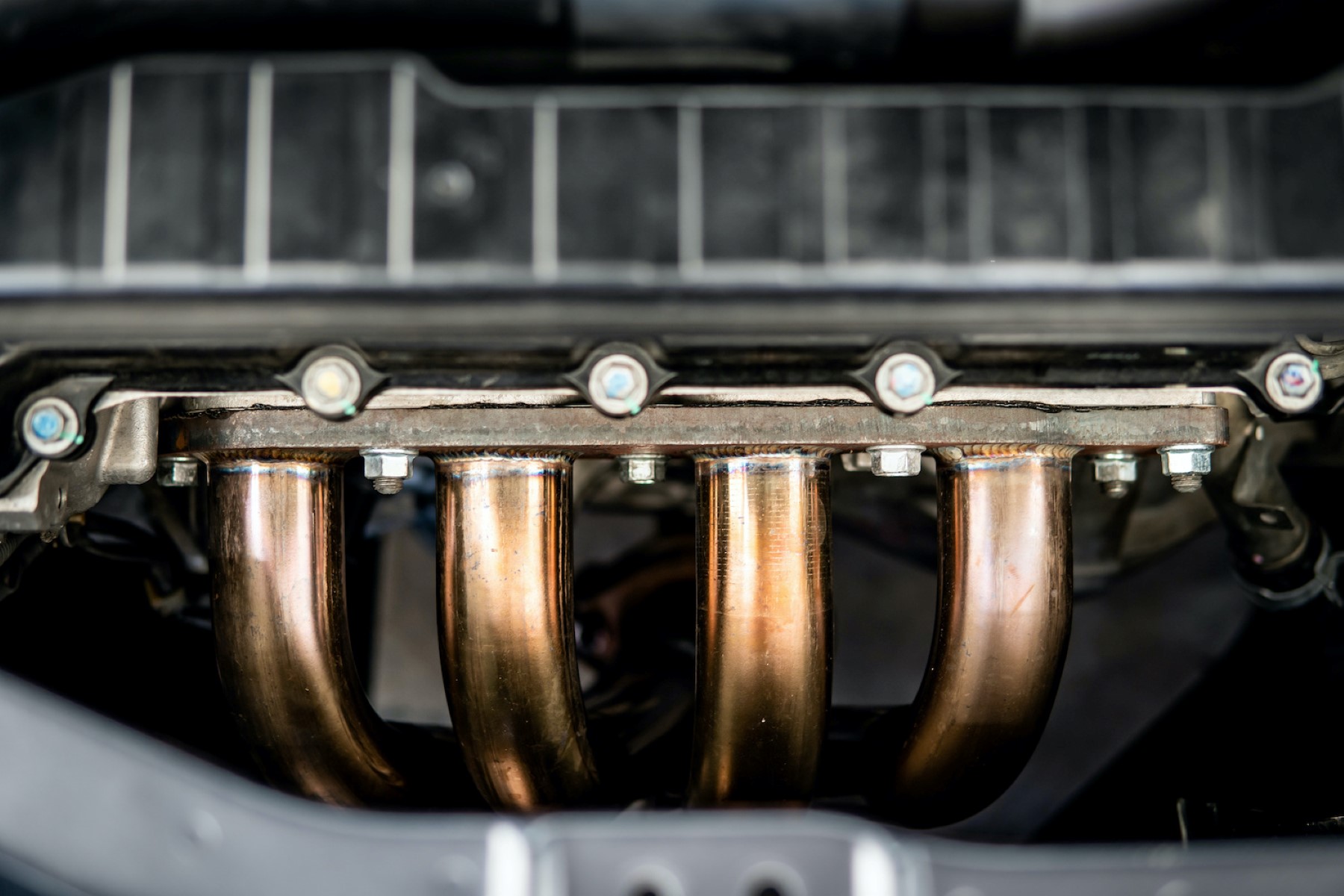Home>Technology and Computers>Unleash The Hidden Potential Of Cut LED Light Strips!


Technology and Computers
Unleash The Hidden Potential Of Cut LED Light Strips!
Published: February 11, 2024
Discover the latest technology to enhance your computer setup with cut LED light strips. Unleash their hidden potential and elevate your tech experience!
(Many of the links in this article redirect to a specific reviewed product. Your purchase of these products through affiliate links helps to generate commission for Regretless.com, at no extra cost. Learn more)
Table of Contents
Introduction
LED light strips, also known as LED tape or ribbon lights, have revolutionized the way we illuminate and decorate our spaces. These flexible, versatile, and energy-efficient light sources have found their way into homes, businesses, and creative projects, offering an array of possibilities for enhancing ambiance and functionality.
In recent years, LED light strips have gained immense popularity due to their remarkable features. They are incredibly thin and flexible, allowing for seamless integration into various environments. The ability to cut them to custom lengths makes them adaptable to almost any space, while their low heat emission and energy efficiency make them an environmentally friendly lighting option.
Moreover, the color options and lighting effects available with LED light strips are virtually limitless, providing users with the ability to create dynamic and captivating lighting displays. Whether it's adding a subtle glow to a living room, creating an eye-catching display in a retail setting, or illuminating outdoor spaces, LED light strips offer a versatile solution for a wide range of lighting needs.
As we delve into the world of LED light strips, we will explore the different types available, the factors to consider when choosing the right one for your needs, and the various creative applications that can truly unleash their hidden potential. Whether you're a DIY enthusiast, a business owner, or simply someone looking to enhance their living space, this guide will equip you with the knowledge and inspiration to make the most of LED light strips in your projects.
Understanding LED Light Strips
LED light strips are thin, flexible circuit boards populated with small light-emitting diodes (LEDs). These LEDs are typically spaced at regular intervals along the strip, providing consistent illumination. The construction of LED light strips allows for a wide range of applications, from accent lighting to task lighting and even full-room illumination.
Types of LED Light Strips
There are several types of LED light strips available, each offering unique features and benefits. The most common types include:
-
Single-color LED Strips: These strips emit light in a single color, such as warm white, cool white, or a specific hue. They are ideal for creating ambient lighting or highlighting specific areas.
-
RGB LED Strips: RGB (Red, Green, Blue) LED strips are capable of producing a wide spectrum of colors by combining different intensities of the three primary colors. This versatility makes them popular for decorative lighting and dynamic color-changing effects.
-
RGBW LED Strips: Similar to RGB strips, RGBW strips include an additional white LED in each pixel, allowing for more accurate and vibrant color rendering, as well as the ability to produce pure white light.
-
Digital LED Strips: These advanced strips feature individually addressable LEDs, enabling precise control over each LED's color and brightness. This allows for intricate color patterns, animations, and dynamic effects.
Key Features and Benefits
LED light strips offer several advantages over traditional lighting options, including:
-
Flexibility: LED light strips are incredibly flexible, allowing them to be bent, twisted, and contoured to fit various surfaces and shapes. This flexibility makes them suitable for a wide range of applications, including curved installations and intricate designs.
-
Energy Efficiency: LED technology is highly energy-efficient, consuming significantly less power than traditional lighting sources. This not only reduces energy costs but also minimizes environmental impact.
-
Longevity: LED light strips have an impressive lifespan, often lasting tens of thousands of hours. This longevity translates to reduced maintenance and replacement costs over time.
-
Low Heat Emission: Unlike incandescent bulbs, which generate a significant amount of heat, LED light strips produce minimal heat, making them safe to touch and ideal for applications where heat management is a concern.
-
Customization: LED light strips can be easily cut to specific lengths, allowing for precise customization to fit the dimensions of a space. This feature enables seamless integration into various projects and ensures minimal waste.
Understanding the diverse types and benefits of LED light strips lays the foundation for making informed decisions when choosing the right option for specific applications. Whether it's creating captivating lighting effects, enhancing ambiance, or improving functionality, LED light strips offer a wealth of possibilities for both residential and commercial settings.
Choosing the Right LED Light Strip
When it comes to choosing the right LED light strip for a specific application, several factors come into play to ensure optimal performance and satisfaction. Understanding these considerations is crucial in making informed decisions that align with the intended lighting goals. Here are key points to consider:
1. Color and Color Temperature
The color and color temperature of an LED light strip significantly impact the ambiance and functionality of a space. Single-color LED strips are suitable for creating specific atmospheres, such as warm white for a cozy setting or cool white for task lighting. RGB and RGBW strips offer dynamic color options, making them ideal for decorative and mood-enhancing lighting.
2. Brightness and Luminosity
The brightness level, measured in lumens, determines the intensity of light emitted by the strip. For ambient lighting, a lower brightness may suffice, while task lighting and accentuating features may require higher luminosity. Understanding the desired lighting effect will guide the selection of an appropriate brightness level.
3. IP Rating
For outdoor or moisture-prone areas, the Ingress Protection (IP) rating of an LED light strip is crucial. It indicates the level of protection against dust and water ingress, ensuring the longevity and safety of the strip in challenging environments. Selecting a strip with the appropriate IP rating for the intended location is essential.
4. Length and Flexibility
Considering the length and flexibility of the LED light strip is vital to ensure a seamless fit within the designated space. Some projects may require longer runs of continuous lighting, while others may benefit from the ability to bend and contour the strip around corners and curves. Customizable options that allow for cutting and reconnecting segments provide versatility for various installations.
5. Control and Compatibility
For dynamic color-changing effects and customized lighting sequences, the control and compatibility of LED light strips with dimmers, controllers, and smart home systems should be evaluated. Compatibility with popular smart lighting platforms and ease of integration with existing setups can enhance the overall lighting experience.
By carefully assessing these factors, individuals and businesses can make informed decisions when selecting LED light strips that align with their specific requirements. Whether it's creating a captivating ambiance in a living space, highlighting architectural features, or adding a touch of creativity to a commercial setting, choosing the right LED light strip is a crucial step towards unlocking its hidden potential in various applications.
Installation Tips and Techniques
Installing LED light strips is a straightforward process, but attention to detail and proper technique can significantly impact the outcome of the installation. Whether it's accentuating architectural features, illuminating workspaces, or adding a touch of ambiance to a room, the following tips and techniques will ensure a successful and visually appealing installation of LED light strips.
1. Surface Preparation
Before applying the LED light strips, ensure that the mounting surface is clean, dry, and free from dust and debris. This will promote strong adhesion and prevent potential issues with the strip detaching over time. Additionally, consider using alcohol wipes to thoroughly clean the surface and improve the bond between the strip and the mounting area.
2. Correct Placement
Carefully plan the placement of the LED light strips to achieve the desired lighting effect. Whether it's outlining a specific area, providing under-cabinet illumination, or creating a dynamic backlighting effect, precise placement is essential. Take measurements and use markers or guidelines to ensure straight and uniform positioning of the strips.
3. Proper Power Supply
Ensure that the power supply for the LED light strips is adequate for the intended installation. Consider the power requirements of the strips, especially when using longer runs or multiple segments. Using the correct power supply and avoiding voltage drop over long runs will maintain consistent brightness and performance.
4. Cutting and Connecting
If the LED light strips require customization to fit specific lengths, follow the manufacturer's guidelines for cutting and reconnecting segments. Use sharp, non-serrated scissors to make clean cuts along the designated cutting points. When reconnecting segments, use solderless connectors or soldering techniques as per the strip's specifications.
5. Heat Management
LED light strips produce minimal heat, but proper heat management is still important, especially when installing them in enclosed spaces or on heat-sensitive surfaces. Avoid tightly coiling the strips, which can trap heat, and ensure adequate ventilation to dissipate any heat generated.
6. Concealing and Protection
Consider using channels, diffusers, or mounting profiles to conceal the LED light strips and provide protection against physical damage. These accessories not only enhance the aesthetics of the installation but also safeguard the strips from accidental impact and exposure to environmental elements.
7. Testing and Adjustment
Before finalizing the installation, test the LED light strips to ensure proper functionality and desired lighting effects. Make any necessary adjustments to the placement, connections, and brightness settings to achieve the intended result.
By following these installation tips and techniques, individuals and professionals can maximize the impact of LED light strips in various applications, from residential lighting projects to commercial installations. The attention to detail and adherence to best practices will result in visually stunning and long-lasting LED lighting solutions.
Creative Applications for LED Light Strips
The versatility of LED light strips lends itself to a myriad of creative applications, offering endless possibilities for enhancing aesthetics, functionality, and ambiance in diverse settings. From residential spaces to commercial environments, the utilization of LED light strips extends far beyond traditional lighting, opening the door to imaginative and captivating lighting solutions.
1. Ambient Lighting and Mood Enhancement
LED light strips are ideal for creating ambient lighting that sets the mood and adds a touch of sophistication to any space. Whether it's gently illuminating a living room, bedroom, or dining area, the soft glow emitted by the strips can transform the ambiance, creating a cozy and inviting atmosphere. By strategically placing LED light strips behind furniture, along architectural features, or within recessed areas, individuals can achieve subtle yet impactful lighting effects that elevate the overall feel of the room.
2. Architectural Accentuation
One of the most striking applications of LED light strips is in accentuating architectural elements within a space. From highlighting crown molding and tray ceilings to outlining doorways and windows, LED strips can draw attention to the unique features of a room, adding depth and visual interest. The gentle illumination provided by the strips can transform mundane architectural details into captivating focal points, infusing a sense of elegance and sophistication into the design.
3. Dynamic Color Effects and Mood Lighting
RGB and RGBW LED light strips offer the ability to create dynamic color effects, making them perfect for mood-enhancing lighting in entertainment areas, bars, restaurants, and event spaces. By programming color sequences or utilizing smart controls, individuals can transform the ambiance of a space at the touch of a button, setting the stage for themed events, parties, or simply creating a vibrant and lively atmosphere.
4. Task Lighting and Functional Integration
In addition to decorative applications, LED light strips serve as effective task lighting solutions, providing focused illumination for workspaces, kitchen counters, and under-cabinet areas. The versatility of LED strips allows for seamless integration into functional areas, offering enhanced visibility and practical lighting for various tasks. Whether it's creating a well-lit workspace or adding functional lighting to a retail display, LED light strips can enhance both the aesthetics and functionality of the environment.
5. Outdoor and Landscape Enhancement
The durability and weather-resistant properties of certain LED light strips make them well-suited for outdoor applications. From illuminating pathways and garden landscapes to accentuating architectural facades and outdoor entertainment areas, LED strips can extend the visual appeal of outdoor spaces, creating captivating and inviting environments after sunset.
6. Artistic Installations and Creative Projects
Beyond traditional lighting applications, LED light strips are increasingly being used in artistic installations and creative projects. From interactive light sculptures and immersive art installations to innovative design concepts in retail and hospitality, the flexibility and versatility of LED strips empower artists, designers, and creators to push the boundaries of conventional lighting and explore new realms of visual expression.
By exploring these creative applications and harnessing the full potential of LED light strips, individuals and professionals can unlock a world of innovative lighting solutions that captivate, inspire, and transform the way we perceive and interact with light. With creativity as the driving force, LED light strips transcend traditional lighting paradigms, offering a canvas for boundless artistic and functional possibilities.
Troubleshooting and Maintenance
Maintaining the optimal performance of LED light strips involves proactive troubleshooting and regular maintenance practices. By addressing common issues and implementing preventive measures, individuals can ensure the longevity and reliability of their lighting installations. Here are essential troubleshooting tips and maintenance guidelines to uphold the functionality and visual appeal of LED light strips:
Identifying and Addressing Common Issues
-
Dimming or Flickering: If LED light strips exhibit dimming or flickering, it may indicate a loose connection, inadequate power supply, or compatibility issues with dimmers. Check the connections, ensure the power supply meets the requirements, and verify compatibility with dimming controls.
-
Color Inconsistencies: In RGB and RGBW LED strips, color inconsistencies may arise due to poor connections, incorrect wiring, or defective components. Inspect the connections, confirm proper wiring, and consider testing the strip with alternative control methods to identify and rectify color discrepancies.
-
Uneven Illumination: Uneven illumination along the length of the LED strip can result from voltage drop over long runs or improper power distribution. Address this issue by using additional power injection points, employing thicker gauge wiring for longer runs, or utilizing voltage amplifiers to maintain consistent brightness.
Preventive Maintenance Practices
-
Regular Cleaning: Dust, dirt, and environmental contaminants can accumulate on the surface of LED light strips, affecting light output and longevity. Periodically clean the strips using a soft, dry cloth or a mild cleaning solution to remove debris and maintain optimal illumination.
-
Inspecting Connections: Ensure that the connections between LED strips, power supplies, and controllers are secure and free from corrosion. Regularly inspect and tighten any loose connections to prevent performance issues and potential electrical hazards.
-
Monitoring Heat Dissipation: While LED light strips generate minimal heat, it is essential to monitor heat dissipation, especially in enclosed or heat-sensitive installations. Ensure proper ventilation and consider adding heat sinks or thermal management solutions to maintain optimal operating temperatures.
-
Environmental Considerations: For outdoor installations, monitor the effects of weather and environmental exposure on LED light strips. Inspect the integrity of weatherproofing measures, such as silicone sealing and waterproof casings, to prevent moisture ingress and ensure long-term durability.
Troubleshooting Techniques
-
Testing Segments: When encountering issues with LED light strips, isolate and test individual segments to identify specific areas of concern. This approach helps pinpoint faulty segments, damaged components, or wiring issues, facilitating targeted troubleshooting and resolution.
-
Utilizing Multimeters: Multimeters can be invaluable tools for diagnosing electrical issues in LED light strips. Use a multimeter to measure voltage, continuity, and resistance along the length of the strips, aiding in the identification of wiring faults and electrical irregularities.
By incorporating these troubleshooting and maintenance practices into their LED lighting projects, individuals can mitigate common issues, prolong the lifespan of LED light strips, and ensure consistent and reliable performance. Proactive maintenance and meticulous troubleshooting not only enhance the overall lighting experience but also contribute to the long-term sustainability of LED lighting installations.
Conclusion
In conclusion, LED light strips represent a transformative lighting solution that transcends traditional illumination, offering a wealth of creative, functional, and energy-efficient possibilities. From the flexibility and versatility of the strips to the diverse applications they enable, the journey through the world of LED light strips has unveiled a myriad of opportunities for individuals, businesses, and creative enthusiasts.
The understanding of LED light strips, encompassing their types, features, and benefits, serves as the foundation for informed decision-making when selecting the right option for specific lighting needs. Whether it's the gentle glow of single-color strips, the dynamic color capabilities of RGB and RGBW strips, or the intricate control afforded by digital strips, the diverse range of options empowers users to tailor their lighting solutions to suit their unique preferences and requirements.
Choosing the right LED light strip involves careful consideration of factors such as color temperature, brightness, IP rating, length, and compatibility, ensuring that the selected strips align seamlessly with the intended applications. By leveraging these considerations, individuals and businesses can unlock the hidden potential of LED light strips, harnessing their capabilities to enhance ambiance, functionality, and visual appeal in various settings.
The installation tips and techniques provided offer valuable insights into the proper placement, power management, and customization of LED light strips, guiding users to achieve seamless and visually striking lighting installations. Furthermore, the exploration of creative applications demonstrates the boundless potential of LED light strips, from ambient lighting and architectural accentuation to outdoor enhancement and artistic endeavors, showcasing the versatility and transformative impact of these lighting solutions.
Moreover, the troubleshooting and maintenance guidelines underscore the importance of proactive measures in upholding the performance and longevity of LED light strips, ensuring consistent and reliable illumination over time. By addressing common issues and implementing preventive maintenance practices, individuals can safeguard their lighting investments and maximize the longevity of their LED installations.
In essence, LED light strips stand as a beacon of innovation and creativity in the realm of lighting, offering a canvas for artistic expression, functional enhancement, and sustainable illumination. As individuals and businesses continue to explore the possibilities of LED light strips, they embark on a journey of discovery, innovation, and visual transformation, where light becomes not just an element of illumination, but a medium for inspiration and expression.








